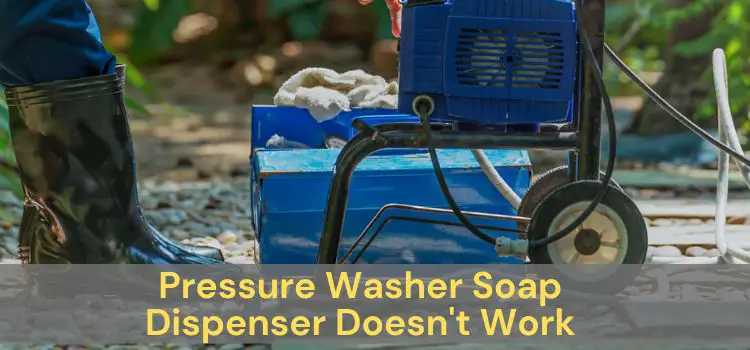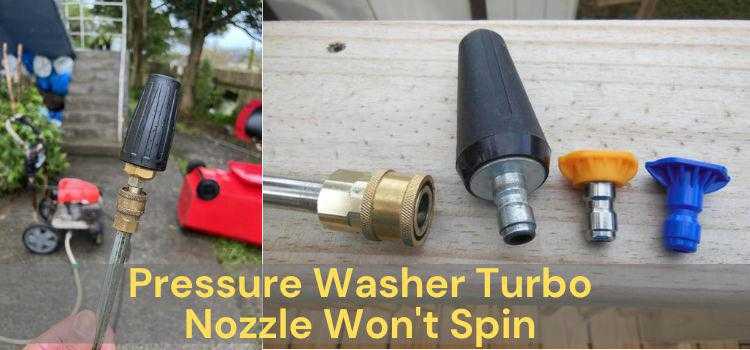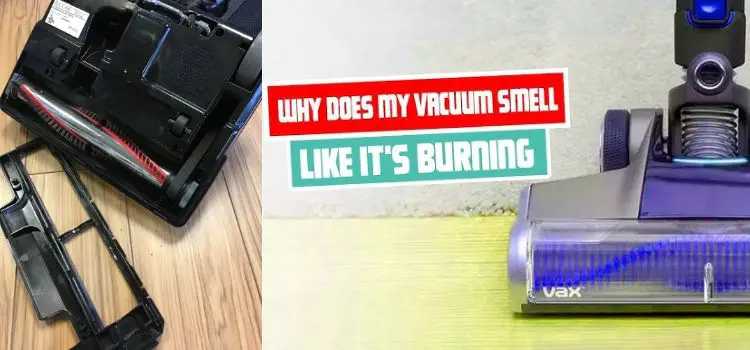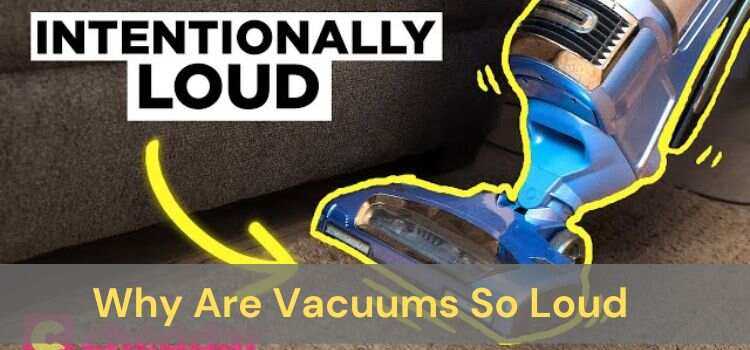· Troubleshooting · 11 min read
Pressure Washer Shuts Off When Trigger Is Pulled: Quick Fixes!

A pressure washer shutting off when the trigger is pulled often indicates a problem with the unloader valve. It could also be due to a clogged nozzle or filter.
Pressure washers are essential tools for efficient cleaning. However, encountering issues like the machine shutting off when the trigger is pulled can be frustrating.
This problem often arises due to an unloader valve malfunction, which regulates the water pressure. A clogged nozzle or filter can also cause the machine to shut down unexpectedly.
Regular maintenance and timely troubleshooting can prevent these issues and ensure your pressure washer operates smoothly.
Understanding the root causes and addressing them promptly will save you time and enhance your cleaning efficiency. Keep your equipment in top condition for optimal performance.
Common Causes Of Pressure Washer Shutdown
Pressure washers are powerful tools for cleaning. But they can sometimes shut down unexpectedly.
Understanding the common causes can help fix the issue quickly. Let’s explore why your pressure washer may shut off when the trigger is pulled.
Fuel Issues In Gasoline Models
Gasoline-powered pressure washers rely on fuel to operate. Fuel problems are a common reason for shutdowns. Here are some possible causes:
- Empty Fuel Tank: Check if the fuel tank is empty. Refill if needed.
- Old or Bad Fuel: Stale fuel can cause the engine to stop. Use fresh gasoline.
- Clogged Fuel Filter: A dirty fuel filter blocks fuel flow. Clean or replace it.
- Carburetor Issues: The carburetor mixes fuel and air. It may need cleaning or adjustment.
Electrical Faults In Electric Washers
Electric pressure washers have different issues. Electrical faults are a common cause of shutdowns. Consider these factors:
- Power Supply: Ensure the washer is plugged in. Check the outlet and cord.
- Extension Cord: Using a long or thin cord can cause power loss. Use the right type.
- Trigger Switch: A faulty trigger switch can stop the washer. Inspect and replace if needed.
- Internal Wiring: Loose or damaged wires can interrupt power. Check and repair them.
Troubleshooting The Unloader Valve
Does your pressure washer shut off when the trigger is pulled? The unloader valve might be the culprit.
This component helps control the pressure and flow of water. A malfunctioning unloader valve can cause significant issues.
Understanding the symptoms and knowing how to adjust or replace it is crucial.
Symptoms Of Unloader Valve Failure
Identifying the signs of a failing unloader valve can save you time. Here are the common symptoms:
- Pressure washer shuts off when trigger is pulled.
- Unusual noises during operation.
- Fluctuating pressure levels.
- Water leaks around the valve.
- Overheating of the motor.
Steps To Adjust Or Replace The Unloader Valve
Follow these steps to adjust or replace your unloader valve:
- Turn off the pressure washer and disconnect it from the power source.
- Locate the unloader valve, usually near the water pump.
- Inspect the valve for visible signs of damage or wear.
- If adjusting, use a wrench to turn the adjustment screw clockwise.
- Test the pressure washer to check if the issue is resolved.
- If replacing, remove the old valve carefully.
- Install the new unloader valve, ensuring all connections are tight.
- Reconnect the pressure washer and power it on.
- Test the unit to ensure proper operation.
Regular maintenance can prevent unloader valve issues. Clean your pressure washer periodically and check for any signs of wear.
Inspecting The Nozzle For Clogs
Pressure washers are great tools for cleaning various surfaces. But they can face issues. One common problem is the pressure washer shutting off when the trigger is pulled. This often indicates a clogged nozzle. Inspecting the nozzle for clogs is a vital step in resolving the issue.
Identifying Nozzle Obstructions
To identify clogs, start by examining the nozzle closely. Look for any visible debris or dirt.
Use a flashlight if needed to see inside the nozzle. A clogged nozzle restricts water flow. This can cause the pressure washer to shut off.
Cleaning Techniques For Nozzle Maintenance
Once you identify a clog, it’s time to clean the nozzle. Follow these simple steps:
- Turn off the pressure washer and disconnect it from the power source.
- Remove the nozzle from the spray wand.
- Use a small, soft brush to clean out visible debris.
- Run water through the nozzle to flush out any remaining dirt.
- For stubborn clogs, use a nozzle cleaning tool or a thin wire.
- Reattach the nozzle to the spray wand and test the pressure washer.
Regular nozzle maintenance can prevent future clogs. Always check and clean the nozzle after each use.
| Step | Description |
|---|---|
| Turn off | Turn off the pressure washer and disconnect it. |
| Remove | Remove the nozzle from the spray wand. |
| Brush | Use a small brush to clean visible debris. |
| Flush | Run water through the nozzle. |
| Clean Tool | Use a cleaning tool for stubborn clogs. |
| Reattach | Reattach the nozzle and test. |
By keeping your nozzle clean, you ensure the pressure washer works efficiently. This simple maintenance step can save you time and frustration.
Pump Problems And Solutions
Pressure washers are powerful tools for cleaning outdoor surfaces. They sometimes face issues like shutting off when the trigger is pulled.
Many of these issues can be traced back to the pump. Understanding the pump problems and solutions can help you get your pressure washer back in working order.
Diagnosing Pump Malfunctions
Diagnosing a pump malfunction involves a few key steps:
- Check for Leaks: Inspect hoses and connections for leaks.
- Listen for Odd Noises: Unusual sounds often indicate pump issues.
- Inspect the Filter: A clogged filter can cause the pump to shut off.
These steps can help pinpoint the problem. Once identified, you can decide on the best course of action.
Pump Repair Vs. Replacement
Deciding between pump repair and replacement depends on the issue’s severity.
| Condition | Repair | Replacement |
|---|---|---|
| Small Leaks | Usually Repairable | Not Necessary |
| Severe Damage | Often Not Worth Repairing | Better to Replace |
| Clogged Filters | Easy to Clean or Replace | Not Needed |
Small leaks and clogged filters are usually easy to repair. Severe damage often requires a replacement. Weighing the cost and time of repair versus replacement can guide your decision.
Water Inlet And Filter Checks
When your pressure washer shuts off when the trigger is pulled, the issue might be with the water inlet
or filter. Ensuring proper water flow and cleaning or replacing filters can often solve this problem.
Ensuring Proper Water Flow
Proper water flow is crucial for your pressure washer. Low water flow can cause the machine to shut off. Follow these steps to ensure proper water flow:
- Check the water source. Ensure the water supply is on.
- Inspect the hose. Look for kinks or leaks.
- Make sure the water inlet valve is open fully.
Cleaning And Replacing Inlet Filters
A clogged inlet filter can also cause issues. Cleaning or replacing the inlet filter ensures uninterrupted water flow. Here’s how to do it:
- Turn off the pressure washer.
- Disconnect the hose from the water inlet.
- Remove the inlet filter. Rinse it under running water.
- If the filter is damaged, replace it with a new one.
- Reconnect the hose and test the machine.
| Step | Action |
|---|---|
| 1 | Turn off the pressure washer. |
| 2 | Disconnect the hose from the water inlet. |
| 3 | Remove and rinse the inlet filter. |
| 4 | Replace the filter if damaged. |
| 5 | Reconnect the hose and test. |
Air In The System And How To Release It
Pressure washers can sometimes shut off when you pull the trigger. One common cause is air trapped in the system.
This air can disrupt the flow of water and cause the machine to stop. Releasing this air is crucial for the washer to function correctly.
Detecting Air Lock
Detecting an air lock in your pressure washer is simple. Check if the machine stops working when you pull the trigger.
If it does, air might be the issue. Listen for a hissing sound; this can indicate trapped air. Also, observe if water flow is weak or uneven.
Another sign of air in the system is if the pump cycles on and off. This inconsistent behavior often points to air pockets inside the washer.
Procedures To Purge Air From The Washer
Releasing air from your pressure washer involves a few straightforward steps. Follow these procedures to ensure smooth operation:
- Turn Off the Machine: Ensure the pressure washer is off and unplugged.
- Disconnect the Hose: Detach the hose from the spray gun and the machine.
- Drain Water: Let any trapped water drain from the hose and the machine.
- Reconnect the Hose: Attach the hose back to the spray gun and the machine.
- Open the Water Supply: Turn on the water supply and let it run for a few minutes.
- Check for Air Bubbles: Observe the water flow for any air bubbles.
- Restart the Machine: Turn on the pressure washer and test the trigger.
Following these steps should help remove any trapped air. This will ensure your pressure washer operates smoothly.
Thermal Relief Valve Inspections
If your pressure washer shuts off when the trigger is pulled, the thermal relief valve might be the issue.
Regular inspections of this valve ensure your pressure washer works efficiently. This section explains the function and replacement timing of the thermal relief valve.
Function Of The Thermal Relief Valve
The thermal relief valve protects your pressure washer from overheating. It releases hot water if the pump gets too hot. This prevents damage to the pump and other components.
The valve opens when water temperature exceeds a safe limit. It then releases hot water and allows cool water to enter. This process keeps the pressure washer safe and extends its life.
When To Replace The Thermal Relief Valve
Inspect the thermal relief valve every few months. Check for any signs of wear or damage. If you notice leaks or malfunctioning, replace the valve immediately.
Follow these steps to replace the valve:
- Turn off the pressure washer and disconnect the power.
- Locate the thermal relief valve on the pump.
- Remove the old valve using a wrench.
- Install the new valve and tighten it securely.
- Reconnect power and test the pressure washer.
A new valve ensures your pressure washer operates without interruptions. Regular inspections and timely replacements keep your equipment in top shape.
Routine Maintenance Tips
Maintaining your pressure washer ensures it works smoothly. Regular upkeep prevents it from shutting off when you pull the trigger. Follow these simple tips to keep your machine in top shape.
Regular Cleaning And Storage Advice
Regular cleaning and proper storage are essential. Clean your pressure washer after every use.
- Flush the system: Run clean water through the machine. This removes dirt and debris.
- Check for leaks: Inspect hoses and connections. Replace any damaged parts.
- Clean the nozzle: Remove and clean the nozzle with a small brush. This prevents blockages.
Store your pressure washer in a dry place. Moisture can cause rust and damage. Use a protective cover to keep it dust-free.
Seasonal Maintenance Checklist
Perform seasonal checks to keep your pressure washer in good condition. Follow this simple checklist:
- Inspect the pump: Look for signs of wear or damage. Replace if necessary.
- Change the oil: Fresh oil ensures smooth operation. Check the manual for the correct type.
- Clean the air filter: A clean filter improves performance. Replace if it’s too dirty.
- Check the spark plug: Ensure it’s clean and in good condition. Replace if worn out.
- Test the trigger gun: Make sure it works correctly. Repair or replace if it’s faulty.
Following these tips will help keep your pressure washer running smoothly. Regular maintenance prevents unexpected shutdowns and extends the lifespan of your machine.
When To Seek Professional Help
Pressure washers are powerful tools, but they can sometimes face issues. If your pressure washer shuts off when the trigger is pulled, it might be time to seek professional help. Knowing when to get expert assistance can save you time and money.
Signs Of Complex Mechanical Issues
Sometimes, the issue can be more than just a clogged nozzle or low fuel. Here are signs that indicate you might need professional help:
- Strange Noises: Unusual sounds can mean internal problems.
- Water Leaks: Water leaking from the pump or hose.
- Constant Shutting Off: The machine keeps stopping even after basic checks.
- Burning Smell: A burnt smell could indicate motor issues.
Finding A Qualified Repair Service
Finding the right repair service is crucial. Here are steps to ensure you choose a qualified professional:
- Check Reviews: Read reviews online to see past customer experiences.
- Verify Certification: Ensure the repair service is certified for your brand.
- Ask for Estimates: Get price estimates from multiple services.
- Warranty Considerations: Check if your warranty covers repairs.
By knowing the signs of complex issues and finding a qualified repair service, you can ensure your pressure washer gets the best care.
Frequently Asked Questions
Why Does My Pressure Washer Shut Off When I Pull The Trigger?
Your pressure washer may shut off due to a clogged nozzle, unloader valve issue, or a faulty trigger gun. Check for blockages, clean the nozzle, and inspect the unloader valve. If the problem persists, consult a professional.
Why Does My Pressure Washer Lose Pressure After Pulling The Trigger?
Your pressure washer may lose pressure due to a clogged nozzle, air in the system, or a faulty unloader valve. Regular maintenance can help.
Why Does My Pressure Washer Keep Shutting Off?
Your pressure washer may shut off due to a clogged nozzle, low water supply, or an overheated motor. Check for blockages, ensure adequate water flow, and allow the motor to cool. Regular maintenance can prevent these issues.
Why Wont My Pressure Washer Start Stay Running?
Your pressure washer won’t start or stay running due to fuel issues, spark plug problems, or a clogged carburetor. Check for fresh fuel, clean or replace the spark plug, and unclog the carburetor to resolve these issues.
Conclusion
Resolving a pressure washer that shuts off when the trigger is pulled can be straightforward. Regular maintenance is key.
Follow the steps mentioned to troubleshoot and fix the issue. Ensuring proper care can extend the lifespan of your pressure washer.
Keep your equipment in top shape for optimal performance.




